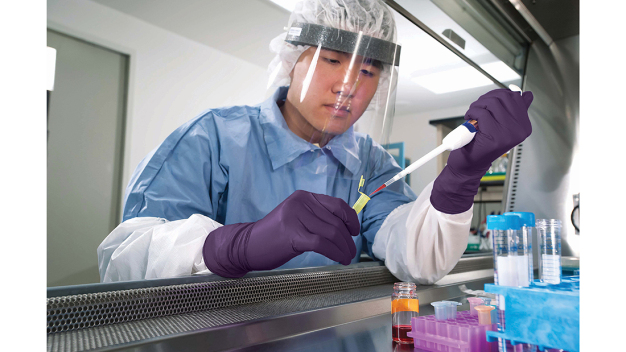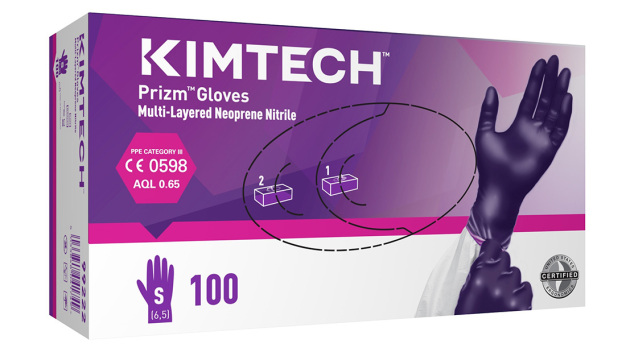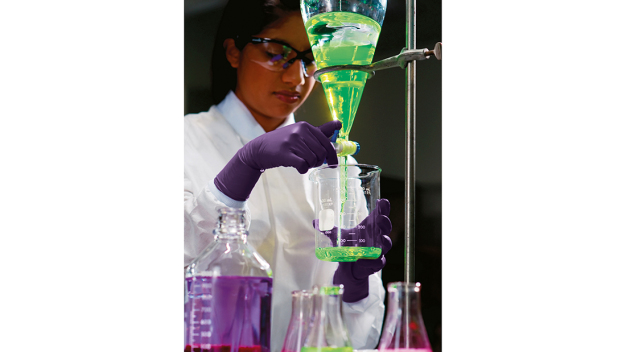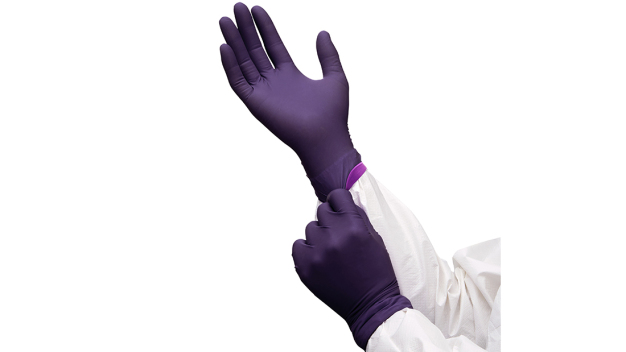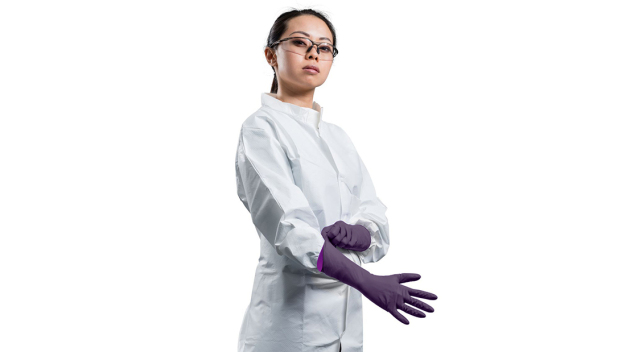Manish Raval, Kimberly-Clark Professional
The top considerations for lab glove selection: protection, precision and comfort
Gloves are one of the most critical elements of personal protective equipment (PPE) in a lab environment. Not only do they protect scientists and researchers from known and unknown risks, they also protect the scientific process.
Consider these statistics:
- Wearing gloves has been proven to reduce the relative risk of injury by 60%
- 30% of people who experienced a hand injury were wearing the wrong type of glove.
- The indirect costs of an injury can be 4-10 times the amount of direct medical costs.
- The average time off work for a hand injury is six days.
The anatomy of the hand is complicated. With bones, tendons, nerve fibers and blood vessels protected by a thin layer of muscle and fat, hands are especially vulnerable to injury. And because they are used so often in lab work as well as everyday activities, hand injuries from harmful objects are common.
This makes the task of selecting the correct glove both important and challenging. According to an article in Health & Safety International, “even small deficiencies in glove design may reduce grip, strength and manual dexterity.” The glove must also be well-suited for the intended purpose without compromising protection, precision or comfort.
For example, thicker gloves may provide the right level of chemical protection, but they can reduce dexterity and impact the user’s ability to perform a specific task. As a result, scientists may select thinner alternatives, which provide adequate dexterity but compromise on protection or even require more frequent replacements. Worse still, they may choose to not wear gloves at all, risking injury or chemical exposure.
Effective glove selection respects the balance between protection, precision and comfort, while being suitable for the end-use application. These three attributes are critical but are challenging to realise through a single hand protection solution.
Glove selection criteria
On first inspection, many choosers of hand protection solutions might find it difficult to distinguish between the myriad of options available. However, appearances can be deceiving, making it crucial to perform an adequate risk assessment prior to selecting the desired solution, since not all can protect the integrity of your science and the safety of your scientists.
Important considerations for glove selection include the following criteria:
Protection: Many laboratory workers are regularly exposed to a range of chemical agents. According to an international safety study, 21 percent of respondents indicated that they had been injured on more than one occasion in the lab. And, in a recent laboratory PPE poll, 85% of respondents said that compliance – getting people to protect themselves from exposure to chemicals or bloodborne pathogens – was their biggest challenge . This highlights the important role protection plays in glove selection. But protection is not one-size-fits-all. You also need to determine the level of protection required based on the intended use.
Here are some questions to ask:
- Is protection against a wide range of lab chemicals required, including cytotoxic drugs?
- Do they need to offer chemical splash protection or full immersion protection?
- Are they manufactured using materials that reduce the risk of allergic reaction?
- Are tasks requiring high levels of durability performed - do they protect against injuries such as punctures and lacerations from broken glassware?
Precision: Gloves that provide effective grip can help with fine motor skills and the ability to hold onto delicate objects, such as glassware. For a lab environment, look for gloves that are thin, yet protective against a wide range of chemicals, and offer tactile sensitivity and enhanced dexterity through features such as textured fingertips.
Comfort: Glove discomfort has been linked to reduced compliance and increased risk of injury, according to an article in Health & Safety International. The article further states that “uncomfortable glove materials may reduce blood circulation, cause numbness, limit finger and hand motion, cause muscle fatigue and reduce work performance.” Therefore, it is essential to consider a glove solution that applies ergonomic principles during the design stage, based on the needs and characteristics of the glove’s intended users. One method to ensure this is to select gloves that offer certified ergonomic comfort.
Gloves and sustainability
Because of their prevalence in labs and the fact that workers can go through several pairs in the course of a day, gloves are a big contributor to a lab’s solid waste stream.
For example:
- An audit conducted by the University of Washington found that 22% of its research waste consisted of nitrile gloves.
- A University of California Santa Cruz laboratory waste assessment found that nitrile gloves made up a majority of laboratory waste destined for the landfill.
There are solutions to help address this. Look for a manufacturer-led, auditable program that diverts used gloves from the landfill through recycling. The RightCycle™ Program from Kimberly-Clark Professional is one such program. Since 2011, it has enabled large global corporations, research facilities, universities, nonprofits and a range of businesses to collect their used nitrile gloves and single-use apparel items and have them turned into new plastic products and consumer goods. To date, the program has diverted more than 1,200 metric tons of waste from landfills.
With a program like this, safety and sustainability truly do go hand-in-hand.
1 U.S. Bureau of Labor Statistics
2 U.S. Bureau of Labor Statistics.
3 Safety Management Group.
4 U.S. Bureau of Labor Statistics.
5 National Institutes of Health (NIH). https://www.ncbi.nlm.nih.gov/books/NBK279362/
6 Health & Safety International. https://www.hsimagazine.com/article/ergonomic-gloves-1065/
7 Nature, Vol 493, January 2013.
8 Daniel J. Scungio, MT (ASCP), SLS, CQA (ASQ), The PPE Compliance Conundrum. https://danthelabsafetyman.com/the-ppe-compliance-conundrum/
9 Health & Safety International. https://www.hsimagazine.com/article/ergonomic-gloves-1065/
Kimberly-Clark Europe
RH2 9QP Reigate Surrey
United Kingdom





